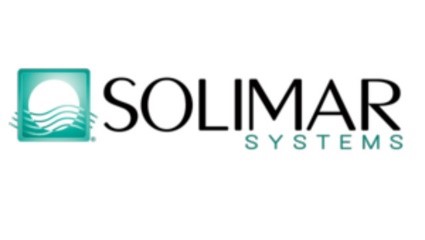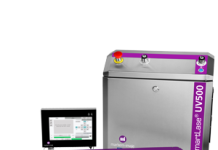Representatives at Solimar Systems share their thoughts on trends that will shape the print industry in 2021. They offer their advice on what printers can do to make their businesses more resilient, competitive and profitable in the year ahead.
The print industry is rapidly changing. Economic pressures, new working requirements and changes in print buyer demands are reshaping the space in which print providers operate.
What are some print technology trends we can expect to see in 2021?
Drew Sprague, President: Among the many trends, I’d like to highlight three big ones. First, PDF asserts its place as the de facto printing standard across application types and workflows. No longer is PDF just for commercial print or electronic statement delivery. The flexibility of PDF, with its rich palette of features including colour control, make it irresistibly attractive even for transactional output.
Second, JDF gains traction. As devices become PDF-only, specifying finishing, tracking production and collecting accounting data drive connectivity from LPR and watched folder handshakes to full-fledged, bi-directional JMF/JDF dialogues.
Third, dashboards and mobile apps make the work floor much more visible. Tracking service level commitments, getting accurate and timely approvals and resolving operational issues become much easier.
Additionally, I see another step-change will be the way in which software is rolled out in a print shop environment. We see many people looking at virtualised environments with both private and hybrid cloud implementations. In 2021, I believe more companies will be looking at how they can make the best use of cloud services while keeping the necessary server-side for security and performance.
Live job tracking and reporting will be crucial to service providers. The ability to track jobs or individual pieces from anywhere at any time provides the accountability that matters for 2021 and beyond.
Do you think data security will continue to be a hot topic in 2021?
Jonathan Malone-McGrew, Senior Director of Engagement: Data security is an extremely hot topic for print providers. Since 2016 and the adoption of GDPR in the EU, we have seen increasing regulations around the globe. These changes require more careful and precise handling of data that may be used to identify a person.
As a consequence, more printers are taking aggressive steps to track Personally and Identifiable Information (PII). This reality drives the need for updated processes and technology that will secure data while being stored or as it moves through print or digital production processes. There are many opportunities to improve security with software solutions that make it possible to obfuscate content, encrypt data and align to an IT department’s strategy for defending against ransomware and other cyber attacks.
The good news is that workflow management software can really help in this respect. The right solution will offer highly secure print file transfer capabilities as well as data redaction, obfuscation and appropriate levels of encryption from the print management solution to the printer itself.
What has changed over the years and makes workflow systems still so relevant and key to businesses today?
Mary Ann Rowan, Chief Experience Officer: From conversations with our global network including Solimar Customer Advisory Council (CAC), customers, partners and industry analysts, it is clear the idea of workflow is only increasing in relevance. From our customers’ perspective, the change in how work is being brought into their print and digital communications delivery environments continues to evolve.
There is a clear trend toward increased personalisation in jobs. This trend impacts print providers by creating shorter runs, or more job-of-one work, that can strain current processes especially if they are still completed manually by production staff. When looking at a production environment, it is critical to understand where bottlenecks are happening as it may challenge on-time delivery of current work and limit the opportunity to take on additional work that boosts profits.
We also see print providers looking to make changes to their environments, whether that is from mergers and acquisitions, expansion into new markets or upgrades to current hardware and software within their facilities. In each one of these examples, the current processes should be reviewed to identify if they are efficient or should be optimised for the best possible performance. This includes reducing redundant systems and/or upgrading to new technologies that are better suited to delivering the features and functions that will make it possible to achieve the organisation’s goals.
In my opinion, our own personal technology has shaped our expectations of what information we should be able to see, access and monitor within our businesses. I liken traditional print environments to the old advertising analogy, ‘I know half of my advertising is working, I just don’t know what half’.
Many environments suffer from a lack of automation, reporting and visibility, which impacts efficiency and responsiveness. Having real-time status updates at your fingertips whether via a mobile, tablet, desktop monitor or screen on a shop floor is critical to managing the ever-changing production environment with maximum effectiveness. Visibility and reporting make it possible to reduce and keep production costs in check while providing the ultimate benefit of empowering the organisation to take on new business and growth opportunities.
What steps can print shops take to make their business more profitable next year (and beyond)?
Malone-McGrew: Generally, when we talk about making the print production process more profitable, we look for areas where we can streamline processes, increase throughput and upgrade the entire performance of the production environment. When trying to impact profitability, you can raise prices to create more margin, but that may not be successful in a competitive environment — a situation most print markets are in today or will be in the future.
More commonly, we see customers turn to look at cost centres, opportunities to grow new business and value-adds for the buyer or consumer. When we walk a workflow with a customer, we often uncover opportunities for improvement. These lead to better utilisation of staff, reduced costs and many times new revenue. I talk with clients and future clients about manual processes, legacy software and hardware that may not be performing well in today’s environment.
Additionally, we discuss pre-printed stocks and forms, transition to colour and inkjet, archival costs and whether their print equipment is able to run at its best based on how files are fed to it. The key: a good workflow opens the door to new and better business. Improving efficiency will bolster profit, but it shouldn’t be the only method your organisation looks at. In many cases, an investment in small, tactical solutions can deliver compelling short-term returns.
What advice would you give to companies to streamline their business/optimise their workflow?
Sprague: The first step is to know your workflow. That sounds like a buzz phrase or a sales pitch, but it is the most important thing before deciding how your organisation and teams should act to streamline and optimise. The best advice we can give organisations that have production print and electronic delivery environments is to know exactly how jobs come in (on-boarding), how they get reviewed or interrogated (pre-press processing activities), how they are modified or enhanced, how they are queued or scheduled for print or e-delivery, and also what happens when things go wrong like damaged pieces and interruptions in the middle of printing.
It is also important to look at all the manual tasks that are being performed as part of the processes to take a job or print file from receipt to delivery. Manual processes invite human error, production time variances and risk when employees are not able to work. Automation, visibility, and accounting are key to making sure workflow is streamlined.
Are there other opportunities that print providers can take advantage of to improve the resilience and profitability of their businesses in 2021?
Rowan: as we look ahead there is no doubt in my mind that print and digital content providers will have the opportunity to accept outsourced work from large brands and organisations, see an uptick in demand for personalised content and be asked to deliver work both physically in print and across electronic distribution channels. These trends shine a positive light on the available opportunities heading into 2021.
My best advice to print providers is to make sure they are positioned to take advantage of all the opportunities that would benefit them. The solutions you implement are of supreme importance to the way your teams and processes work together in harmony and for success. I see significant opportunities for print providers to leverage technology that has been designed to be implemented with a professional services light strategy. This allows organisations to shorten the implementation, to easily train up and have confident people on staff to manage the solution and save money both in the short and long term on professional service hours.
SOLIMAR SYSTEMS
https://www.solimarsystems.com/





















